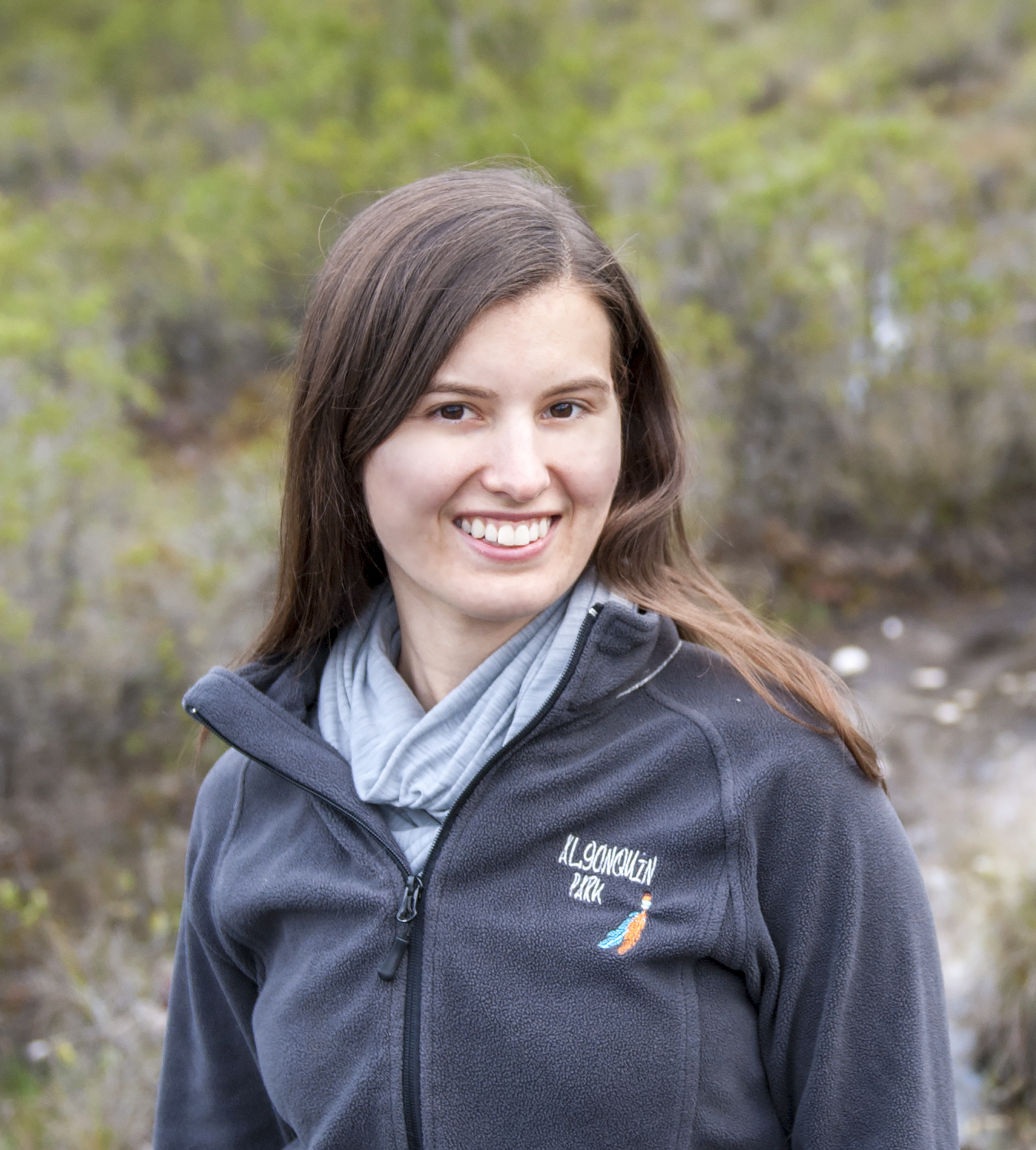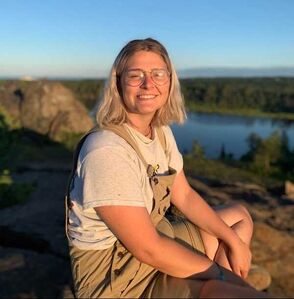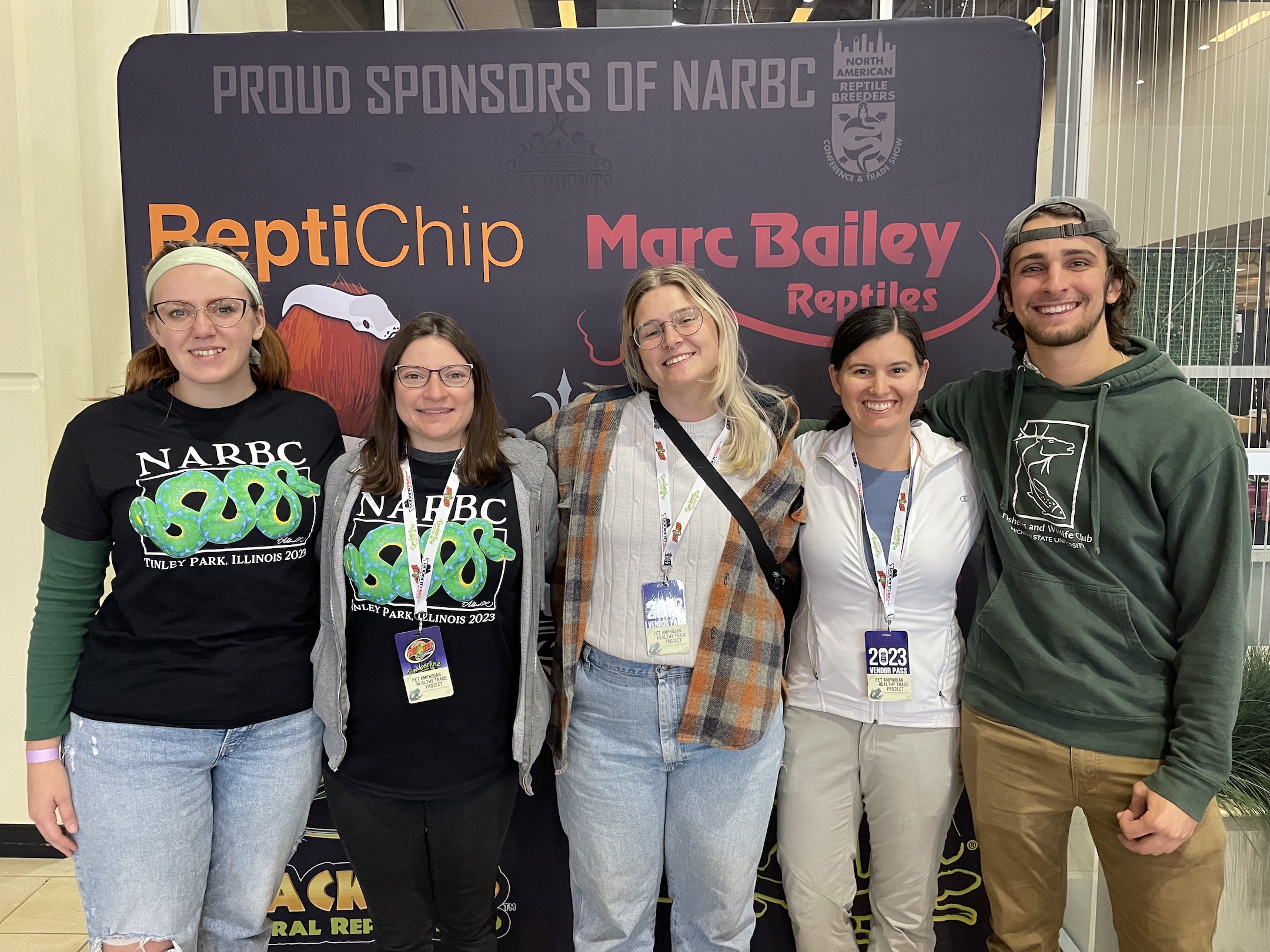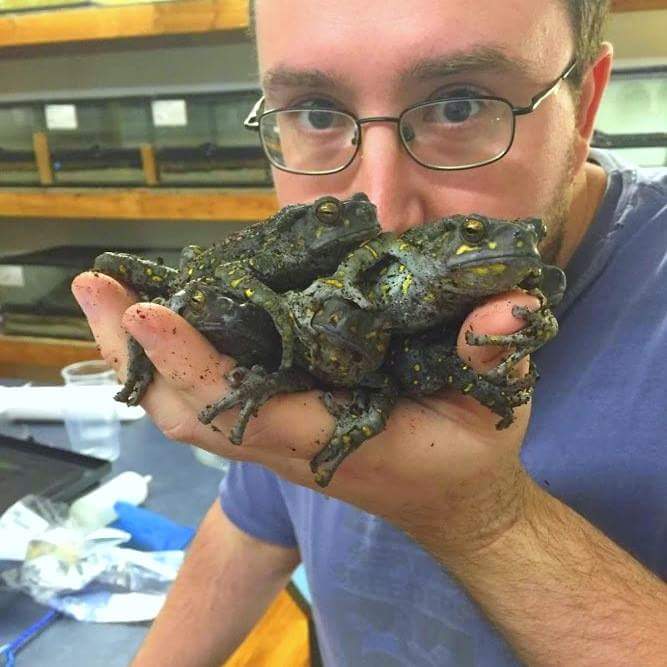MSU researchers receive $2.75 million grant to investigate movement of amphibian pathogens in wildlife trade networks
MSU Fisheries and Wildlife researcher Alexa Warwick and MSU Master's student Gia Haddock are partnering with pet industry stakeholders to examine disease mitigation strategies


A team of researchers led by Michigan State University Wildlife Engagement Specialist Alexa Warwick and MSU Department of Fisheries and Wildlife Master’s Student Gia Haddock is working with pet industry partners to examine disease mitigation strategies that will minimize the risk of amphibian pathogens spreading from captive pet populations to wild populations.
MSU researchers and a multi-institutional team of collaborators, including researchers at the University of Tennessee, Washington State University, University of Massachusetts and Rutgers University) will identify how socio-economic decisions and pathogen dynamics impact each other in a wildlife trade network and partnering with industry leaders to support application and implementation of pathogen screening, reporting and networking programs.
Researchers are collaborating with the pet amphibian trade industry through a partnership with the Pet Advocacy Network, in addition to key business partners like Josh’s Frogs based in Owosso, Michigan, and Reptiles by Mack based in Xenia, Ohio.
The project, “Socioeconomic and Epidemiological Drivers of Pathogen Dynamics in Wildlife Trade Networks,” was funded in 2022 through a $2.75 million grant from the Ecology and Evolution of Infectious Diseases Program, a joint program of the National Science Foundation, National Institutes of Health and the U.S. Department of Agriculture.

The beginnings of the now-nationwide project date back to 2019, when Haddock, then an undergraduate research student, proposed an independent study addressing stakeholder knowledge and perceptions of a newly discovered pathogen (Batrachochytrium salamandrivorans; Bsal), a chytrid fungus that that was responsible for several massive salamander die off events in Europe.
“I attended MSU as an undergrad and have worked with Alexa from the inception of this work, so this project is very near and dear to my heart,” said Haddock. “We approached this project with the hopes of taking a preventative measure to see what procedures and processes industry has in place to handle potential Bsal exposure. We spent hundreds of hours over the past four years connecting with our various stakeholders, assessing needs, and working with experts at tto refine the focus of our survey and the scope and scale of the project.”
Bsal is currently not found in the U.S., but it is critical to understand the dynamics of this disease before it enters North America, especially since one third of all salamander species are found on this continent, Warwick said.
Haddock immersed herself in the pet trade and wildlife industry, connecting with breeders, pet owners, businesses, veterinarians, and other wildlife conservation organizations, to survey pathogen-exposure readiness, testing methods, barriers to access and application for owners and businesses. The research team is working with industry to build networks with the goal of aligning industry leaders, pet owners, researchers, and regulators to establish proactive systems to prepare for instances of pathogen detection.
“Because the pet trade network is one of the major pathways for spread of pathogens like Bsal, it is critical we understand stakeholder knowledge, values, and behaviors, such as businesses’ biosecurity practices,” Warwick said.

Over five years, the multi-institutional research team will determine what aspects of the trade, like species composition and the number of animals, influence pathogen occurrence. With more than 2.5 million amphibians imported in the U.S. each year for pet amphibian trade and more than 600 million live animals moving throughout more than 180 nations per year, the need for advanced pathogen mitigation is critical. This is the first study to investigate the relationship between socioeconomic factors and pathogen dynamics across a tractable wildlife trade network.
“Engagement is the first step to not only protect amphibians found in North America, but to support the pet amphibian trade industry,” Haddock said. “We’ve been working with industry leaders to reflect the needs of the community and encourage feasible sustainable business practices.”
Many infectious outbreaks, like that of monkeypox, chronic wasting disease and COVID-19, have been linked to wildlife trade.
"Research shows that testing amphibians and ensuring they are free from diseases like Bsal raises their value. It's a smart business move, as well as the right move from an ethical/moral standpoint, to ensure the animals we produce and sell are free from such pathogens" said Zach Brinks, Vice President of Live Operations at Josh's Frogs. "We're thrilled to have the opportunity to work alongside those in the scientific community, such as Dr. Warwick, to identify and implement solutions that halt the spread of dangerous pathogens that can impact wild populations and the pets we love.”
Opportunities for pet amphibian owners, businesses, and state agency staff to be involved in the research are available via the project website: https://www.healthyamphibiantrade.org/. Or to follow the project on Facebook: https://www.facebook.com/petamphibtrade.
“I really hope that the amphibian pet community feels supported and heard, and I hope that we are able to provide them with the tools and support that they need to ensure a healthy trade that protects the animals involved in the trade, protects the animals that could be at risk in wild populations, and protects the people involved, whose happiness and oftentimes livelihoods depend on the amphibian pet trade,” Haddock said.
Warwick and the research team ultimately aim to produce a certification program for the pet amphibian industry, incorporating input from industry leaders, pet ownership advocates, veterinarians, and researchers, to better address pathogen awareness and mitigation.
Partnering with pet owners
Brinks holds a Bachelor of Science in Biology from MSU and served as a teacher’s assistant for retired Department of Integrated Biology Professor Dr. James Harding, during his time as a Spartan. His interest in amphibians and reptiles began at a young age, sparked a small business during his college years and became his professional passion as Vice President of Live Operations at Josh’s Frogs, where he oversees animal, insect and plant production as well as shipping and receiving of live animals.

“I had asthma and allergies when I was a kid, so I couldn't really have things that were furry, so I got my first snake when I was 4 years old,” Brinks said. “I kept and bred various reptiles and amphibians in college and paid about half of my tuition at MSU by breeding Bearded Dragons. I just have always been around these animals. I enjoy them and want more people to keep them and be successful with them too.”
Josh’s Frogs places an emphasis on ensuring responsible pet ownership and business practices, and to stay on the cutting edge of emerging threats and mitigation strategies, Brinks said the company is always seeking research and education opportunities.
“Participating in research and collaborating with experts around the country is one of our best methods to ensure that our animals are healthy and make sure that people are having a positive experience with their pets,” Brinks said. “Participating in studies has provided biosecurity recommendations, ways to ensure proper testing and monitoring and ways to respond to a potential outbreak, that have helped us identify legitimate, economically feasible fixes that could be put in place.”
The collaborations with pet store owners and industry leaders have been invaluable to understanding the scope and scale of the trade network, Haddock said. “Communication with Josh’s Frogs, Reptiles by Mack and the Pet Advocacy Network has been so vital, because no effective change is going to be made unless we have the community that’s being affected on board.”
Brinks encourages pet owners and sellers to get involved with the project to benefit the health of their animals, their readiness for a potential outbreak and the benefits of working with researchers focused on improving the health of the animals and the pet amphibian community.
“The researchers involved are transparent and trustworthy and answer a ton of questions to help you through issues your business may be having,” Brinks said. “And if you do participate, and something pops up in testing that is a concern, MSU researchers will work with you to find an approach to solve the issue that will also hopefully prevent it in the future and will in the long-term save you money and keep the pet industry thriving. This project provides the pet industry a healthy approach to solving issues and a chance to be part of identifying potential problems within the industry and solving them before they can cause large-scale harm to animals and businesses.”



 Print
Print Email
Email



